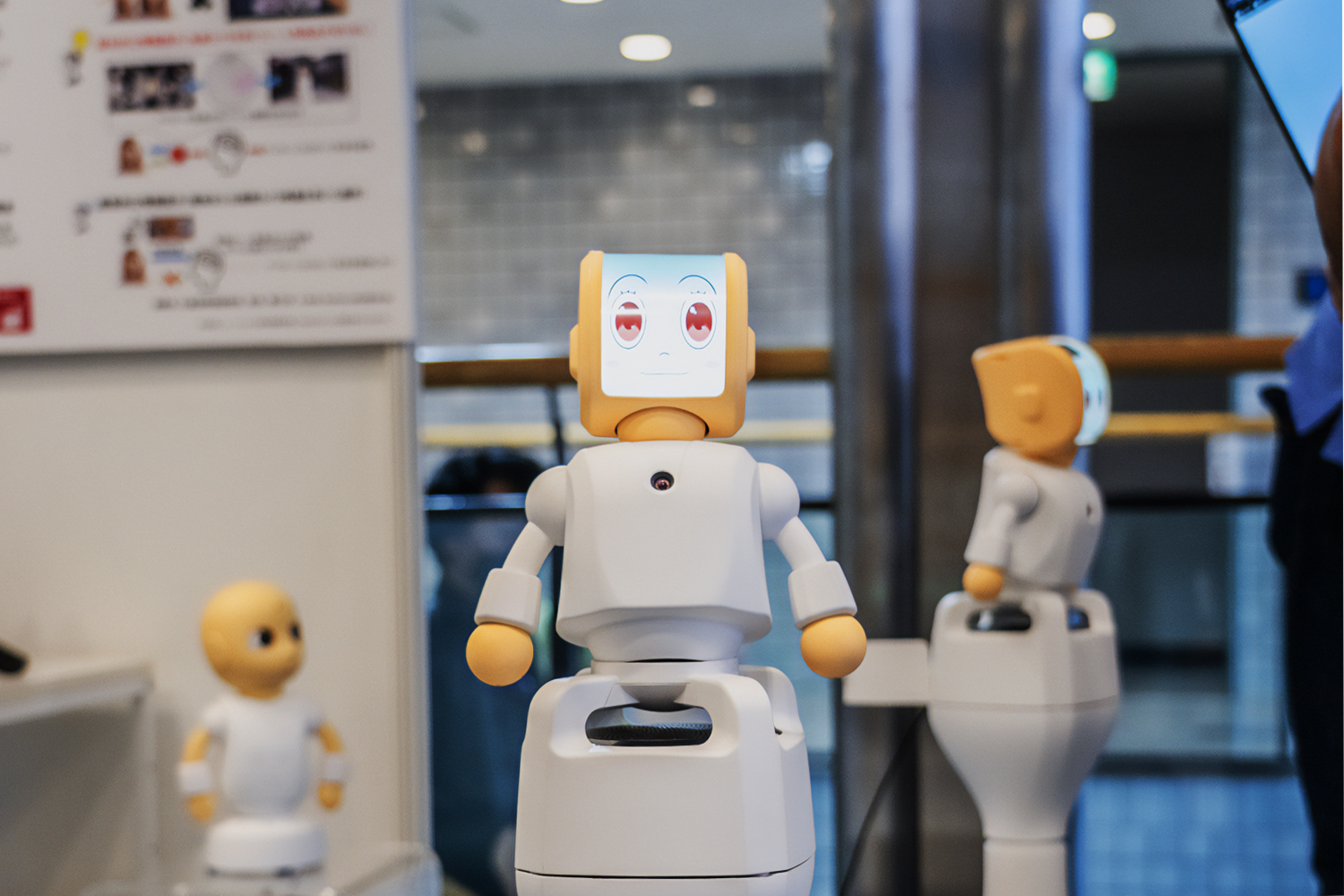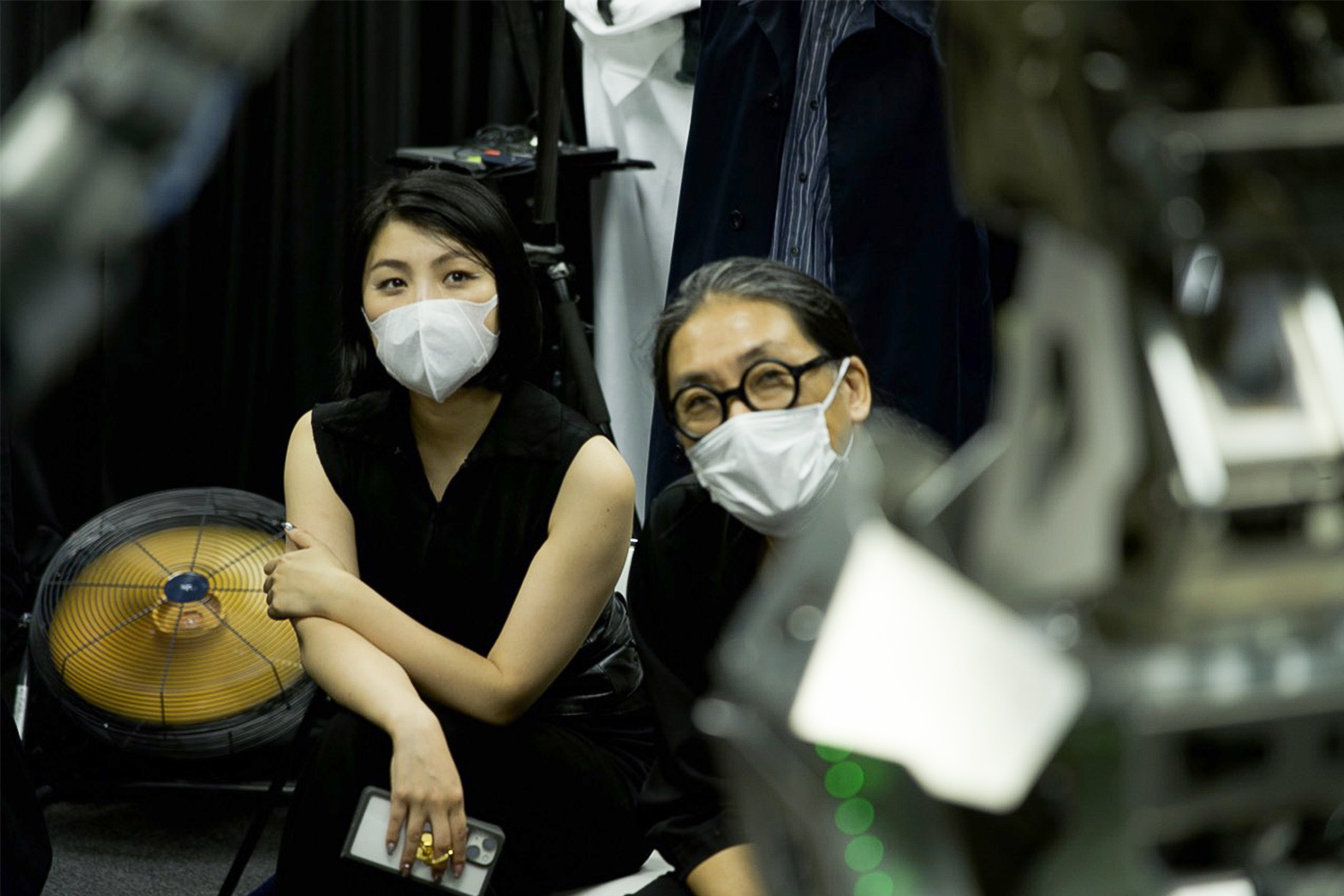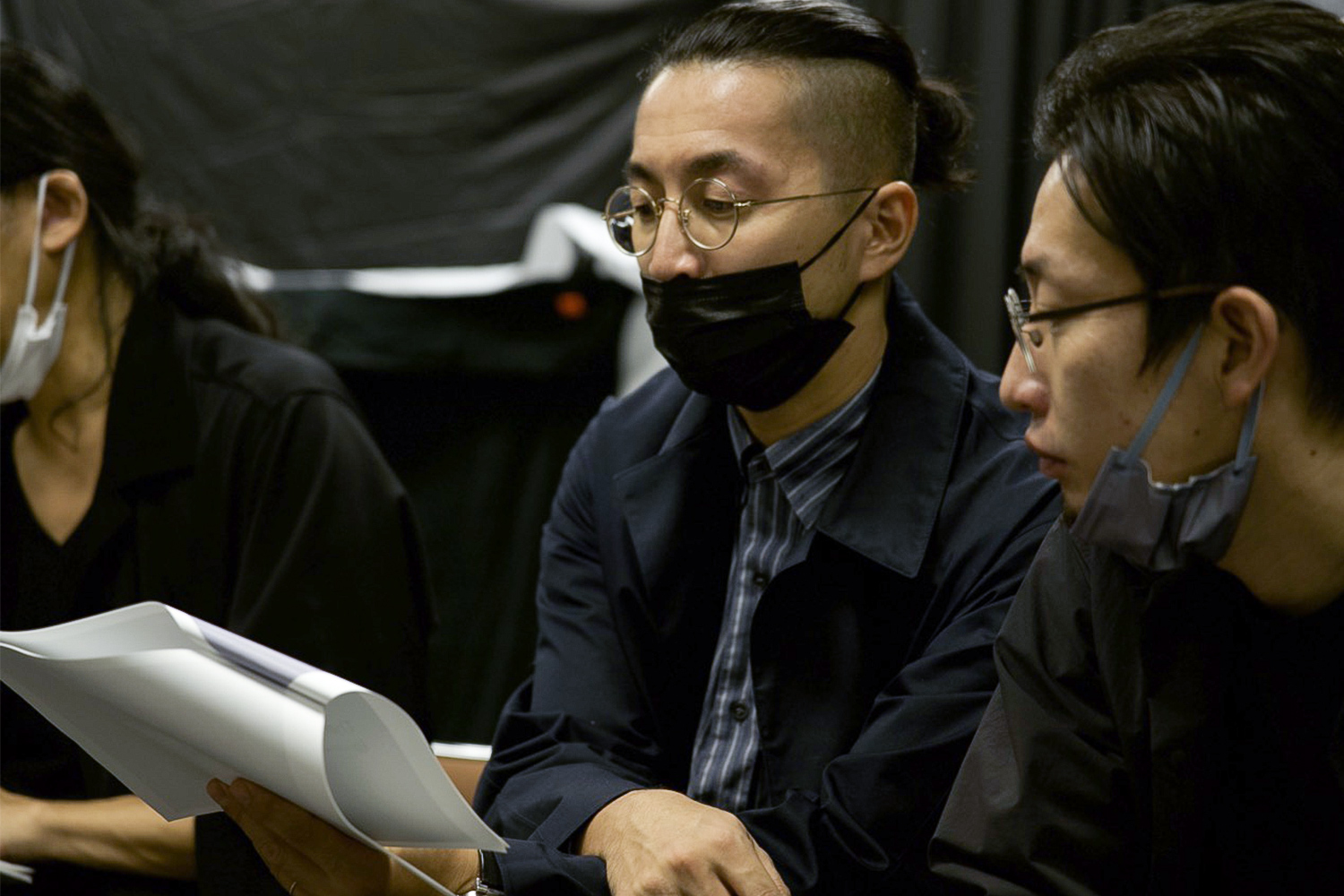[Secrets of Development #1] The world fifty years from now as seen through robot design
Encounters with a range of robots await in every corner of the Future of Life signature pavilion. Among robots being developed today, the robots that will make us think about the future of communication that visitors will see for the first time when they visit the pavilion play a major role in presenting the aspirations of this pavilion. This is a simple introduction to the other side of the cutting edge of robot design.

The extreme shapes of robot design as tools
Humans have been making countless variations of tools throughout our existence, and robots are the newest form of tool we can have. But ISHIGURO Hiroshi, the thematic project producer, believes that robots and androids will eventually go beyond the relationship between tools and humans; we will become the same: he feels that our world-view will change to focus on the awarenesses, the ideas inside, rather than what is on the outside.
So what sort of form are we referring to when we talk about “the extreme forms of robot design as tools?” Our focus was on “primitive” materials such as stone and water, which were used in the architecture of this pavilion, and as motifs in its interior décor. Stone was humanity’s very first tool; a material that has been part of our lives since prehistory. It was stone tools that led humanity on the path of so many evolutionary changes in terms of intelligence, opening up new futures for us.
At the same time, if we look at today’s tool as things (industrial design), we can imagine that we are moving into an era when we can choose designs that suit us, rather than using the same mass-produced items as everyone else.
What is needed from robot design fifty years from now
The robots currently being developed that consider the future of communication are the robots based on a vision of our lifestyles fifty years in the future. In that world, there is a new industrial design, the very latest in robot design. That design is simple, with a clear beauty; it is sustainable design. In other words, it is not flamboyant design, but one that will have an increased focus on more primitive design. Which is why we believe that incorporating “primitive” materials like stone, the wellspring and the symbol of evolution and innovation, is suited for robot design. This idea that decoration will not be the focus also fits in with ISHIGURO Hiroshi’s idea that robots and androids will eventually go beyond the relationship between tools and humans; we will become the same: our world-view will change to focus on the awarenesses, the ideas inside, rather than what is on the outside.

Development through discussions with professionals in all fields
At the Future of Life signature pavilion, we are not just about developing robots for the world half a century in the future: we are working on developing metahuman androids that symbolize the future a thousand years hence. As part of this development, we discuss a range of issues. These include how humans and tools evolve to adapt to an environment, what diversity means in its essence and what a society without discrimination is, and what is a world where humans and robots can merge. In addition to ISHIGURO Hiroshi and the other members, MATSUI Tatsuya, HIROKAWA Tamae, KIKUCHI Akane, secca inc. and other designers and artists active in a range of fields are taking part as collaborating artists, creating the future of robots and our world. A new breath of life, brought about through the convergence of wisdom and technology. We will update this site with reports of the development and project, so stay tuned!



Collaborative artists expressing the future of robots
MATSUI Tatsuya
Designer/Artist
Born in Tokyo in 1969. After graduating from the Nihon University College of Art in 1991, he worked at Kenzo Tange Associates before moving to France. He was involved with the design of PINO and other humanoid robots in the Japan Science and Technology Corporation. In 2001, he founded Flower Robotics, Inc. He has designed and developed a range of robots and exhibited his original robots at the Museum of Modern Art in New York, the Venice Biennale, the Musée des Arts Decoratifs in the Louvre in Paris, the Vitra Design Museum, and more. In 2012, he founded Atelier Tatsuya Matsui, and, in addition to working on design projects, he has recently been creating and releasing contemporary art as an artist. In 2021, he took part in the Byodoin Offering Project, which was launched to pray for the end to COVID-19 infections, donating his glass art dyed using natural indigo, “oeuf ho-oh” (egg of the phoenix). Winner of multiple awards, including the Good Design Award, the 6th Nichigei Award, the ACC Bronze Award, the iF Design Award (Germany), the Red Dot Design Award (Germany), and more.
http://www.flower-robotics.com/
HIROKAWA Tamae
Creative Director/Designer, SOMA DESIGN
She started as a designer at Issey Miyake and worked there for eight years. She established SOMA DESIGN in 2006 and debuted her own brand, SOMARTA, at the Tokyo Collection that year. In 2007, she won the Newcomer Award and the Shiseido Sponsorship Award at the 25th Mainichi Fashion Grand Prix.
Before her first solo exhibition, “Tamae Hirokawa: Body Genealogy,” held in 2014, different companies featured her as the designer of their main exhibitions, such as the “NEOREAL” exhibition by Canon at the Milan Design Week in 2008, “iQ×SOMARTA MICROCOSMOS” by TOYOTA MOTOR Co. at the Tokyo Design Week in 2008, and “02Gen-Taurs,” a wheelchair exhibition by Yamaha Motor Design at the International Conference for Universal Design in 2014.
In 2017, SOMARTA’s flagship product, the “Skin Series,” was added to the permanent collection of the Museum of Modern Art (MoMA). Furthermore, in 2018, the WIRED Audi Innovation Award recognized her innovative achievements.
Tamae gained international recognition for her collaboration with ASICS in the creation of podium jackets for the 2021 Olympics in Tokyo. Later that year, she was appointed artist of the year at the annual “in BEPPU” art event held in Oita Prefecture, where she created a new Shinto festival with the local residents of the area.
http://www.somadesign.jp/
KIKUCHI Akane
Art Director/Experience Designer
Founder and CEO of KiQ Design Studio, Akane left her home in Sendai at the age of 18, to study in New York. This experience allowed her to rediscover the depths of Japanese culture, particularly being inspired by Japanese manners, customs, and communication design.
With the goal of finding harmony between art, culture, and science, Akane transforms objects and ideas in ways never seen before, providing a fresh perspective for projects in Japan and globally. As an artist and researcher, she is pursuing “shosa-logy,” the study of how people carry themselves––exploring how humans express themselves through their hearts.
Akane’s creative work has been widely recognized, for instance, by the Japan Media Arts Festival for the “Pureland altAR,” a new form of Buddhist altar objects. She is also the recipient of numerous design awards, from the Design for Asia award for her creative direction of a university space to the Windows Mixed Reality Grand Prize for her “IKEBANA VR EXPERIENCE.”
Continuing to evolve her unique perspective across genres, she has appeared in Ars Electronica, spoken at TEDx, and served as an official member of the selection committee for the World OMOSHIROI Award.
https://kiq.ne.jp/
secca inc.
secca is a creative collective that aims to create new value by identifying future questions from a distinctive vantage point. It develops new objects and experiences in response to these questions. Based in Kanazawa, a city known for its food and crafts, secca is distinguished by an experimental approach using a variety of materials and techniques that transcend existing frameworks, from traditional crafts to cutting-edge technology, based on its unique thinking. secca works to achieve the following two targets: The first is the creation of original works that express the question itself. It represents research and development efforts that explore the possibilities of manufacturing. secca innocently questions the role that objects will play in the future through their original works. The second is an initiative to rethink the nature of the next generation’s mass production. The role of mass production has shifted from the era of luxury goods production in the dark to that of providing solutions to social issues while updating affluence. While reviewing preconceived ideas and materials, secca questions the value that can be delivered only through mass production, and collaborates with experts and manufacturers to present specific proposals to the world. Working on these “expression of questions” and “social implementation of questions” in pairs is the individuality and raison d’être of secca.
https://secca.co.jp/